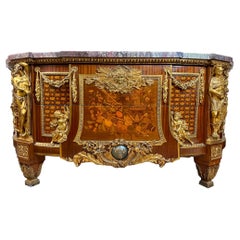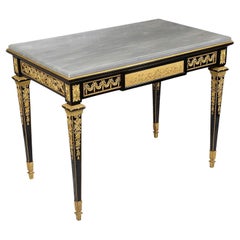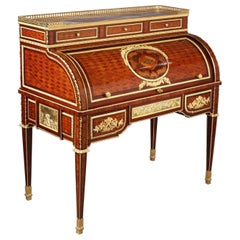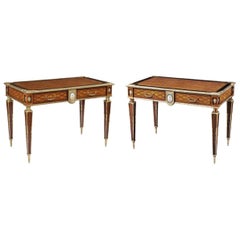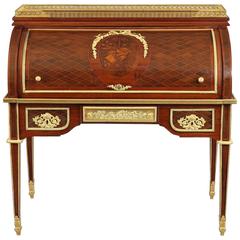Jean Henri Reisener
Antique Late 19th Century French Louis XVI Commodes and Chests of Drawers
Bronze
Antique Late 19th Century French Louis XVI Center Tables
Marble, Ormolu
Antique Mid-19th Century French Louis XVI Desks and Writing Tables
Bronze
Antique 19th Century French Louis XVI Desks
Bronze
Antique Mid-19th Century English Louis XVI Tables
Bronze, Ormolu
Recent Sales
Antique Late 19th Century French Louis XVI Desks
Bronze
People Also Browsed
Antique Late 19th Century Swiss Bookcases
Walnut
Early 20th Century French Louis XV Commodes and Chests of Drawers
Ormolu
Antique Late 19th Century French Louis XV Living Room Sets
Fabric, Giltwood
Antique 19th Century English Chinese Chippendale Vitrines
Glass, Mahogany
20th Century Danish Neoclassical Dinner Plates
Porcelain
Antique Late 19th Century French Napoleon III Jewelry Boxes
Bronze, Enamel, Ormolu
Antique Mid-19th Century Neoclassical Beds and Bed Frames
Walnut, Burl
Antique Mid-18th Century French Louis XV Sofas
Walnut
Antique 1730s European Baroque Beds and Bed Frames
Paint
Antique Early 1900s French Louis XVI Living Room Sets
Fabric, Giltwood
Antique Late 19th Century French Louis XV Musical Instruments
Wood, Giltwood
18th Century Portrait Paintings
Oil
Antique Early 1900s German Rococo Dinner Plates
Porcelain
20th Century Italian Hollywood Regency Living Room Sets
Upholstery, Giltwood
Antique 19th Century French Louis XV Floor Lamps
Crystal, Ormolu
Antique Early 1900s French Belle Époque Table Clocks and Desk Clocks
Griotte Marble, Bronze, Ormolu
A Close Look at Louis Xvi Furniture
Reflecting the final era of royal opulence before the upheaval of the French Revolution, antique Louis XVI furniture features more angular shapes than the Rococo curves of the Louis XV style, harkening back to the imposing grandeur of Louis XIV.
Dating between 1750 and 1800, an era that overlapped with the last king of France whose reign was cut short by the guillotine, Louis XVI furniture, known as the goût grec, is emblematic of the neoclassical revision that French furniture underwent during the second half of the 18th century.
Authentic Louis XVI furniture characteristics include clean lines and carved details such as scrolls and acanthus flourishes that were inspired by ancient Greece and Rome. This was informed by a burgeoning interest in antiquity in the 18th century, owing to new archaeological excavations at sites including Pompeii and Herculaneum. It largely eclipsed the more East Asian–influenced ornamentation of Louis XV for something more geometric and symmetrical.
The Louis XVI style was defined by what was being created for the palatial rooms at Versailles and Fontainebleau, particularly for the queen, with cabinetmaker Jean-Henri Riesener being a favorite of Marie-Antoinette’s for his luxurious pieces accented with gilded bronze and marquetry. Furniture maker Jean-Baptiste-Claude Sené was also a major designer of the period, with his pieces for the royal residences adorned with giltwood and neoclassical touches like tapered columns for chair legs and laurel leaf carvings. Cabinetmaker Adam Weisweiler occasionally incorporated into his furniture porcelain panels produced by Sèvres, a popular manufacturer of European ceramics that served the crown with serveware, vases and other decorative objects.
Find a collection of antique Louis XVI seating, tables, cabinets and other furniture on 1stDibs.
Read More
What Is Ormolu, and Why Are We Talking about It?
This golden material glamorized neoclassical furnishings and transformed upper-crust sitting rooms from France to Philadelphia in the 18th and early 19th centuries.
How to Spot Louis XIV, Louis XV and Louis XVI Chairs
A field guide for anyone who wants to brush up on their knowledge of French antiques
